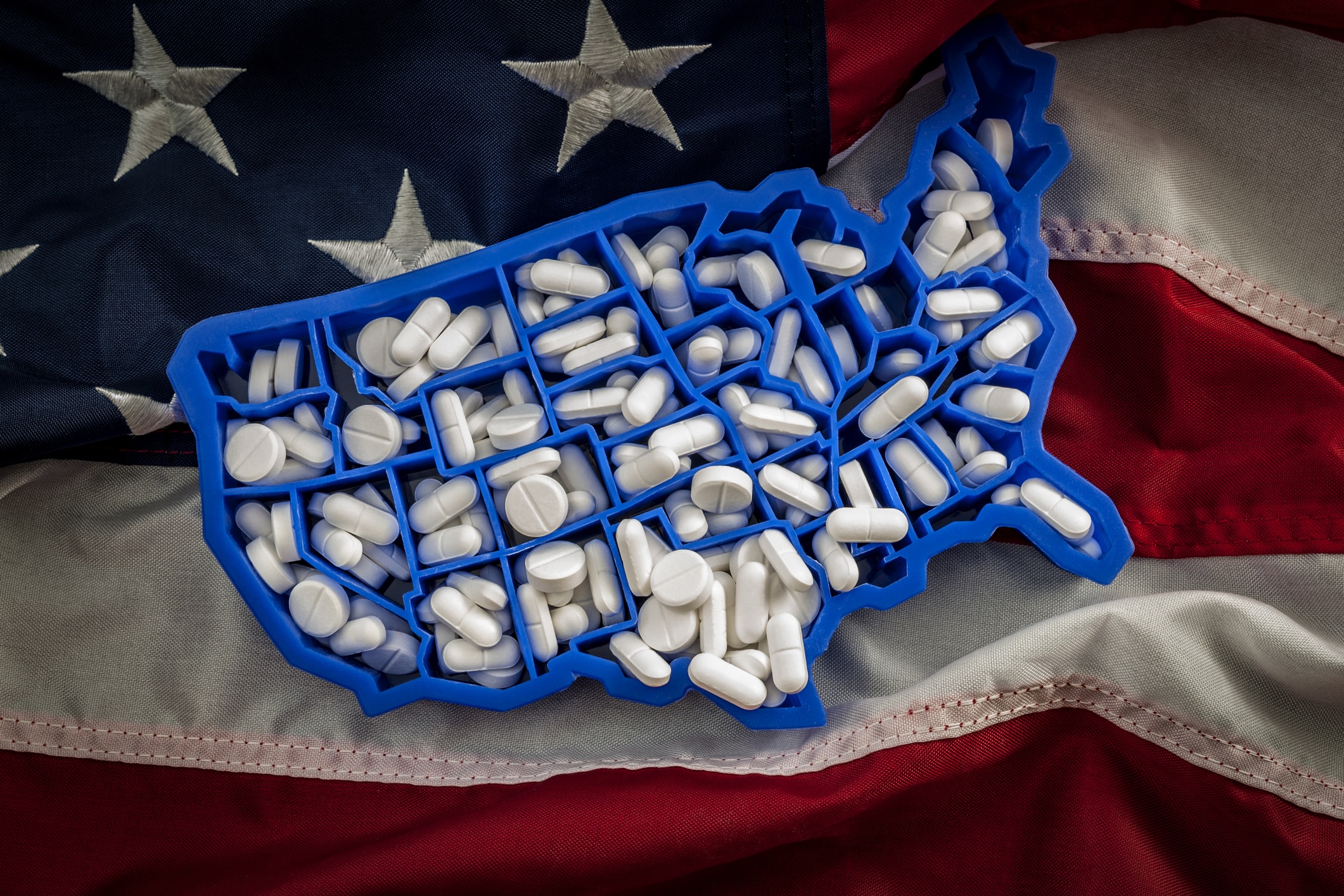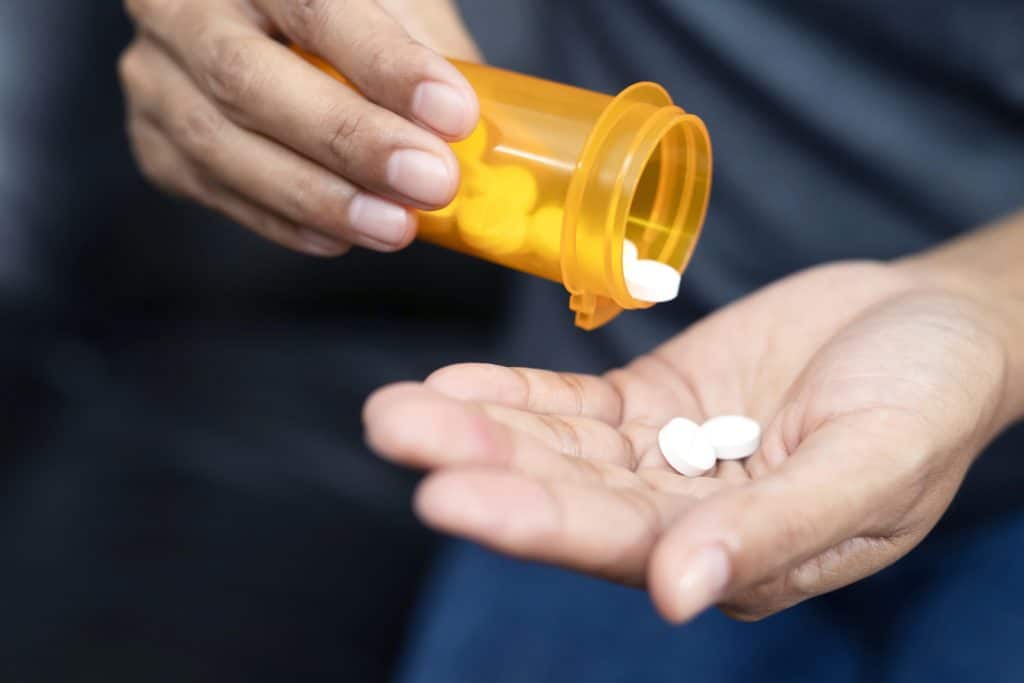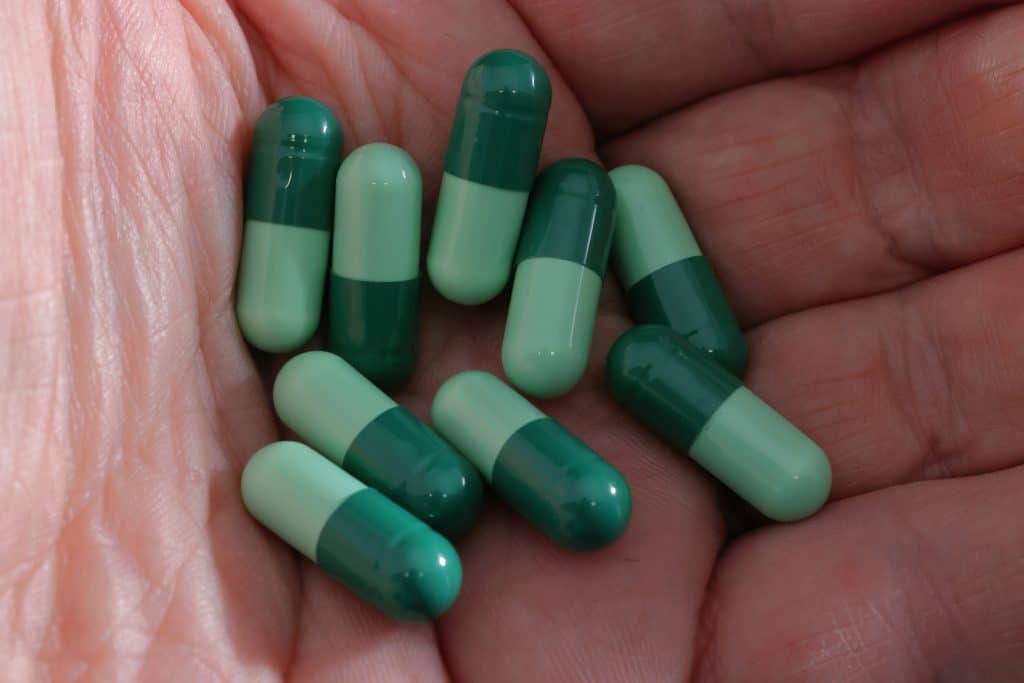
Addiction in America is a widespread crisis affecting millions. This article delves into the alarmingly high rates of substance use disorders, the demographics most impacted, and the urgent need for comprehensive solutions.
We’ll explore addiction statistics, analyze the impact on different groups, and discuss effective prevention and treatment strategies.
Key Takeaways
- Over 45 million U.S. adults experience substance use disorders, with significant societal impacts and regional disparities highlighting the need for urgent intervention.
- Alcohol use disorder affects nearly 28.9 million Americans, leading to substantial health and social costs, including preventable deaths and economic burdens.
- The opioid crisis, primarily driven by synthetic opioids like fentanyl, continues to result in high overdose death rates, necessitating multifaceted treatment approaches and public awareness efforts.
The Current State of Addiction in America
The current state of addiction in America is nothing short of an epidemic. With over 45 million adults experiencing a substance use disorder in the past year, the sheer scale of this issue is overwhelming.
This translates to approximately 17.82% of the adult population, reflecting a significant societal challenge that needs immediate attention. Among these, drug use disorder affects 9.41% of adults, highlighting the widespread nature of drug addiction.
Youth are not spared from this crisis either. Approximately 1.6 million adolescents, or 6.34% of individuals aged 12 to 17, are grappling with substance use disorders. Early exposure to addictive substances can have long-lasting effects, necessitating efforts to address substance abuse among young people.
Alaska, in particular, has the highest rate of substance use disorder among adults at 24.30%, showcasing the regional disparities in this crisis.
The impact of addiction extends beyond individual suffering, affecting families, communities, and the nation as a whole. Millions of Americans are battling substance use disorders, which not only devastates lives but also places a significant burden on healthcare systems, law enforcement, and social services.
The widespread presence of drug use disorder, alcohol use disorder, and rising drug overdoses highlights the necessity for comprehensive solutions to this addiction crisis.
Find Hope and Healing: Call Us Now!
Take the first step towards a brighter future! If you or a loved one is seeking support for substance abuse, we are here to help. Call us today and let our dedicated team guide you to the right treatment options. Your path to recovery starts now!
- Connect with an expert addiction specialist 24/7/365
- Learn about treatment costs
- Arrange fast access to a treatment program
Request a Call
OR
Make a Call
Alcohol Use Disorder Statistics
Alcohol remains the most commonly abused substance in the United States, with nearly 28.9 million Americans suffering from an alcohol use disorder in the past year. This staggering figure represents about 10% of the population aged 12 and older.
The impact of alcohol addiction is profound, affecting individuals across all age groups, from adolescents to older adults.
Excessive alcohol consumption is a major cause of preventable death in the U.S., accounting for about 385 deaths daily. Annually, over 95,150 people lose their lives due to alcohol-related causes, highlighting the severe consequences of alcohol abuse.
Among individuals under 21, alcohol-related deaths account for 3.98% of total fatalities, emphasizing the need for targeted interventions to prevent underage drinking.
Alcohol addiction imposes immense social and economic costs. Alcohol is linked to 10% of fatalities among individuals aged 15 to 49, a critical period in life where people are typically most productive.
The extensive prevalence of alcohol abuse and its devastating impact on health and society highlight the need for effective prevention and treatment strategies.
Opioid Use Disorder and Its Consequences

The opioid crisis continues to be one of the most pressing public health challenges in the United States. In 2019, the misuse of prescription opioids was reported by 9.49 million Americans aged 12 and older, highlighting the widespread nature of this issue.
Opioid use disorder has devastating consequences, including a high rate of overdose deaths. In 2023, an estimated 107,543 drug overdose deaths occurred in the U.S., with opioids being a major contributor.
Synthetic opioids, particularly fentanyl, are a significant driver of the opioid epidemic. Fentanyl alone accounted for approximately 74,702 deaths in 2023, representing about 60% of all drug-related fatalities. The combination of heroin and fentanyl has exacerbated the crisis, leading to a surge in overdose deaths.
The impact of the opioid crisis is felt across the nation, with states like Alaska and Oregon experiencing notable increases in overdose deaths. Despite some progress in reducing opioid-related fatalities from 2022 to 2023, the numbers remain alarmingly high.
Tackling the opioid crisis demands a multifaceted approach, incorporating improved prescription practices, greater access to addiction treatment, and heightened public awareness of synthetic opioids’ dangers.
Prescription Drug Misuse

Prescription drug misuse is a growing concern, particularly among adolescents and young adults. Hydrocodone, one of the most commonly misused prescription opioids, had 5.1 million users, illustrating the widespread nature of this issue.
The misuse of prescription medications extends beyond opioids, with significant numbers of adolescents aged 12 to 17 also misusing stimulants and other prescription drugs.
Males are significantly more likely to misuse prescription medications compared to females, highlighting a gender disparity in prescription drug abuse.
Prescription drug misuse can result in addiction, overdose, and various negative health outcomes, emphasizing the necessity for effective prevention and intervention strategies.
Illicit Drug Use Trends
Illicit drug use remains a significant problem in the United States, with trends showing increasing use of certain substances. Cocaine-related overdose deaths rose to about 29,918 in 2023, reflecting the dangerous and addictive nature of this illegal stimulant.
Cocaine use has serious health effects, including organ damage and respiratory failure, and can lead to addiction after just one use.
Methamphetamine use is also on the rise, with psychostimulant overdose deaths, including methamphetamine, increasing to around 36,251 in 2023.
Law enforcement agencies, particularly in the western and midwestern U.S., view methamphetamine as a significant threat, further highlighting the urgency of addressing this issue.
Marijuana remains the most commonly used illegal drug, with 45.7% of Americans having used it at least once in their lifetime. While often perceived as less harmful, marijuana use is not without risks, and the potential for marijuana addiction should not be overlooked.
Increasing trends in illicit drug use highlight the need for comprehensive drug control policies and prevention efforts.
Substance Abuse Among Different Demographics
Substance abuse affects various demographics differently, with significant variations based on age, gender, and ethnic backgrounds.
Approximately 37.3 million Americans aged 12 and older were current illegal drug users as of 2020, indicating a widespread issue that spans across different segments of the population.
About 13.5% of people aged 12 and older reported drug use within the last month, showing a year-over-year increase of 3.8%.
Grasping the demographic differences in substance abuse is essential for creating targeted interventions. Younger individuals are typically more inclined to use drugs. However, the rate of drug use is increasing more rapidly among those over 40.
Similarly, men are more likely than women to suffer from substance use disorders, particularly involving illicit drugs.
Programs aimed at specific demographics can more effectively address the unique risk factors and needs of each group.
Age Groups
Substance abuse patterns vary significantly across different age groups. Young males are the demographic most affected by drug abuse and substance disorders, with a higher prevalence of substance use among younger individuals.
However, recent trends indicate that substance use is increasing more rapidly among individuals over 40, highlighting a shifting dynamic in addiction demographics.
These shifts highlight the necessity for age-specific prevention and treatment programs. While younger populations may benefit from school-based interventions and family-focused strategies, older adults may require different approaches, including healthcare-based initiatives and community support programs.
Gender Differences
Gender differences play a significant role in substance abuse. Drug abuse is more prevalent in males than females, with men significantly more likely to die from alcohol-related causes. Men account for 69.1% of alcohol-related deaths, reflecting the higher rates of alcohol addiction and abuse statistics among males.
Substance abuse patterns also differ between genders, necessitating gender-specific interventions. Women, for instance, tend to transition from substance abuse to dependence more quickly than men, indicating a need for early intervention and tailored treatment approaches for females.
Recognizing these differences is key to developing effective prevention and treatment strategies.
Ethnic and Cultural Backgrounds
Substance use disorders show significant disparities among different ethnic and cultural groups. American Indian and Alaskan Native populations have notably higher rates of substance use disorders, reflecting unique cultural and socioeconomic factors.
The overdose growth rate for Black individuals from 2018 to 2020 was 16.1%, indicating a troubling increase in substance abuse and its consequences within this community.
Latinx individuals also experience growing rates of overdose, with a 12.6% increase from 2018 to 2020. These disparities highlight the need for culturally sensitive prevention and treatment programs that address the specific needs and challenges faced by different ethnic groups.
The 2021 NSDUH report provides detailed estimates of substance use disorders by race, ethnicity, and age group, underscoring the importance of tailored approaches to tackle this issue.
Find Hope and Healing: Call Us Now!
Take the first step towards a brighter future! If you or a loved one is seeking support for substance abuse, we are here to help. Call us today and let our dedicated team guide you to the right treatment options. Your path to recovery starts now!
- Connect with an expert addiction specialist 24/7/365
- Learn about treatment costs
- Arrange fast access to a treatment program
Request a Call
OR
Make a Call
Mental Health and Substance Use Disorders
The relationship between mental health and substance use disorders is complex and deeply intertwined. In 2023, over 12.8 million adults reported experiencing serious mental illness, reflecting the severe impact of mental health issues on individuals.
Major depressive episodes affect 20.17% of youth aged 12-17, equating to nearly 5 million individuals, many of whom also struggle with substance use disorders.
High rates of co-occurrence exist between substance use disorders and mental health conditions such as anxiety disorders, depression, and bipolar disorder. Stress is a significant risk factor for both mental disorders and substance abuse disorder, influencing brain circuits that regulate motivation.
The interaction between substance use and mental illness can complicate treatment adherence, resulting in more severe symptoms and challenges in recovery.
Integrated treatment approaches addressing both mental health and substance use disorders are more effective than treating each condition separately.
The Substance Abuse and Mental Health Services Administration (SAMHSA) aims to enhance public health by promoting mental well-being and preventing substance misuse, highlighting the importance of comprehensive care.
The Financial and Social Impact of Addiction

The financial and social impact of addiction is monumental, costing the nation over $532 billion annually, nearly 6% of the nation’s income. These costs stem from lost productivity, increased healthcare expenses, and the burden on law enforcement.
Addiction treatment, however, can be more cost-effective than other measures, such as incarceration, with outpatient cocaine treatment costing around $3,100 annually.
Substance abuse also takes a significant toll on public health, contributing to approximately 28% of annual deaths in the U.S. The COVID-19 pandemic exacerbated this issue, with more than half of Americans reporting an increase in their alcohol intake during the lockdowns.
Racial and ethnic minorities face higher likelihoods of adverse legal outcomes for drug-related offenses, highlighting the need for equitable policies and interventions.
Barriers to Effective Addiction Treatment
Despite the availability of addiction treatment, several barriers hinder effective recovery. Differences in defining ‘medical necessity’ can result in denied coverage for essential treatments.
The Affordable Care Act and parity laws have only partially improved access to treatment, with insurance companies frequently denying claims and limiting patient access. Managed Care Organizations often require treatment providers to be within their network, further restricting options for patients.
Additionally, limitations in treatment program availability lead to high demand exceeding supply, impeding effective recovery. Telemedicine has expanded access but faces challenges like poor internet access in rural areas.
Medicaid coverage for addiction treatment varies by state, often lacking comprehensive service inclusion.
Overcoming these barriers is critical for improving treatment outcomes and supporting individuals on their recovery journey.
Solutions and Prevention Strategies
Effective solutions and prevention strategies are vital to combating the addiction crisis. Prevention efforts must be multifaceted, involving school-based, family-based, and community programs tailored to specific populations.
Universal prevention programs target the entire population to delay the onset of substance use, while selective programs focus on high-risk groups.
Community engagement and supportive environments are critical for promoting healthy behaviors and preventing substance use among youth. Family-based interventions that improve parenting skills and family communication have proven particularly effective in reducing adolescent substance use.
Evidence-based school programs, such as Life Skills Training, equip students with skills to resist peer pressure and make informed decisions about substance use. These comprehensive strategies can significantly reduce the prevalence of substance use disorders.
National Initiatives and Regulations
National initiatives and regulations play a crucial role in addressing the addiction crisis. The Controlled Substances Act (CSA) is a key piece of legislation related to drug scheduling and definitions, aiming to regulate drugs and drug sales.
However, the CSA does not consider the potential for bodily damage in its scheduling decisions, which can sometimes lead to controversial classifications.
Employer-sponsored health plans have also begun to cover addiction medications, with approximately 60% of these plans including such coverage.
These efforts, along with public policies on education, treatment financing, and limiting access to addictive substances, are crucial in the ongoing fight against addiction.
Personal Stories of Recovery
Personal stories of recovery provide hope and demonstrate the potential for overcoming addiction. Chantel highlighted significant moments in her recovery journey, emphasizing both the struggle and the breakthroughs she experienced.
Her story serves as a powerful reminder that recovery is possible, even amid immense challenges.
Nicole celebrated six years of sobriety, reflecting on the initial feelings of hopelessness she overcame to achieve her recovery. Her journey underscores the importance of perseverance and the transformative impact of effective addiction treatment.
Andrea shared a pivotal moment when she decided to drive away from her old life instead of succumbing to addiction, marking the start of her recovery. These personal narratives are a testament to the resilience of the human spirit and the possibility of a brighter future.
Summary
In summary, addiction in America is a multifaceted crisis that affects millions of lives and places a significant burden on society. From alcohol use disorder and opioid addiction to the misuse of prescription drugs and the rise of illicit drug use, the scope of this problem is vast.
The statistics are alarming, but they also highlight the urgent need for comprehensive solutions and prevention strategies.
Addressing the addiction crisis requires a concerted effort involving individuals, families, communities, and policymakers. By understanding the current state of addiction, exploring effective prevention and treatment strategies, and supporting those on their recovery journeys, we can make a significant impact.
Let us strive to create a society where those struggling with addiction receive the help they need and where prevention efforts are robust and effective. Together, we can turn the tide on this pressing public health issue.
Find Hope and Healing: Call Us Now!
Take the first step towards a brighter future! If you or a loved one is seeking support for substance abuse, we are here to help. Call us today and let our dedicated team guide you to the right treatment options. Your path to recovery starts now!
- Connect with an expert addiction specialist 24/7/365
- Learn about treatment costs
- Arrange fast access to a treatment program
Request a Call
OR
Make a Call
Frequently Asked Questions
What is the prevalence of substance use disorders in the U.S.?
Approximately 17.82% of adults in the U.S. experienced a substance use disorder in the last year, representing over 45 million individuals. This highlights a significant public health concern affecting a large portion of the population.
How many Americans suffer from alcohol use disorder?
Approximately 28.9 million Americans suffer from alcohol use disorder annually. This significant number highlights the importance of awareness and support for those affected.
What is the impact of synthetic opioids on overdose deaths?
Synthetic opioids, particularly fentanyl, significantly contribute to overdose deaths, accounting for approximately 60% of all drug-related fatalities in 2023. This alarming trend underscores the urgent need for effective intervention strategies.
Are there gender differences in substance abuse patterns?
Yes, there are gender differences in substance abuse patterns, as drug abuse is more prevalent in males, who account for a significant majority of alcohol-related deaths.
This underscores the need for gender-specific approaches in treatment and prevention strategies.
What are effective prevention strategies for substance abuse?
Effective prevention strategies for substance abuse involve implementing school-based, family-based, and community programs that are specifically tailored to the needs of different populations, such as Life Skills Training for students.
This approach enhances resilience and reduces the likelihood of substance misuse.
Our helpline is 100%
free & confidential
If you or someone you care about is struggling with drug or alcohol addiction, we can help you explore your recovery options. Don’t face this challenge alone—seek support from us.
Programs
Resources
Will my insurance
cover addiction
treatment?
We're ready to help
Find the best
drug or alcohol treatment
center
Are you or a loved one struggling with addiction? Call today to speak to a treatment expert.












